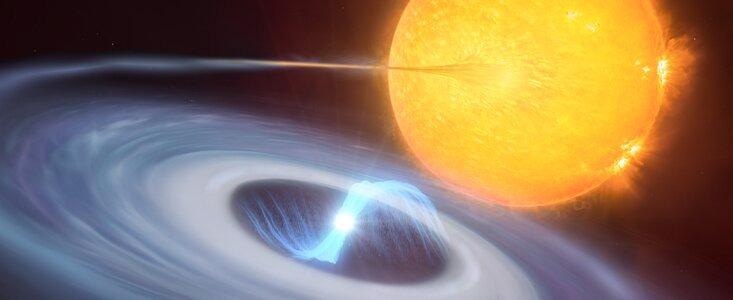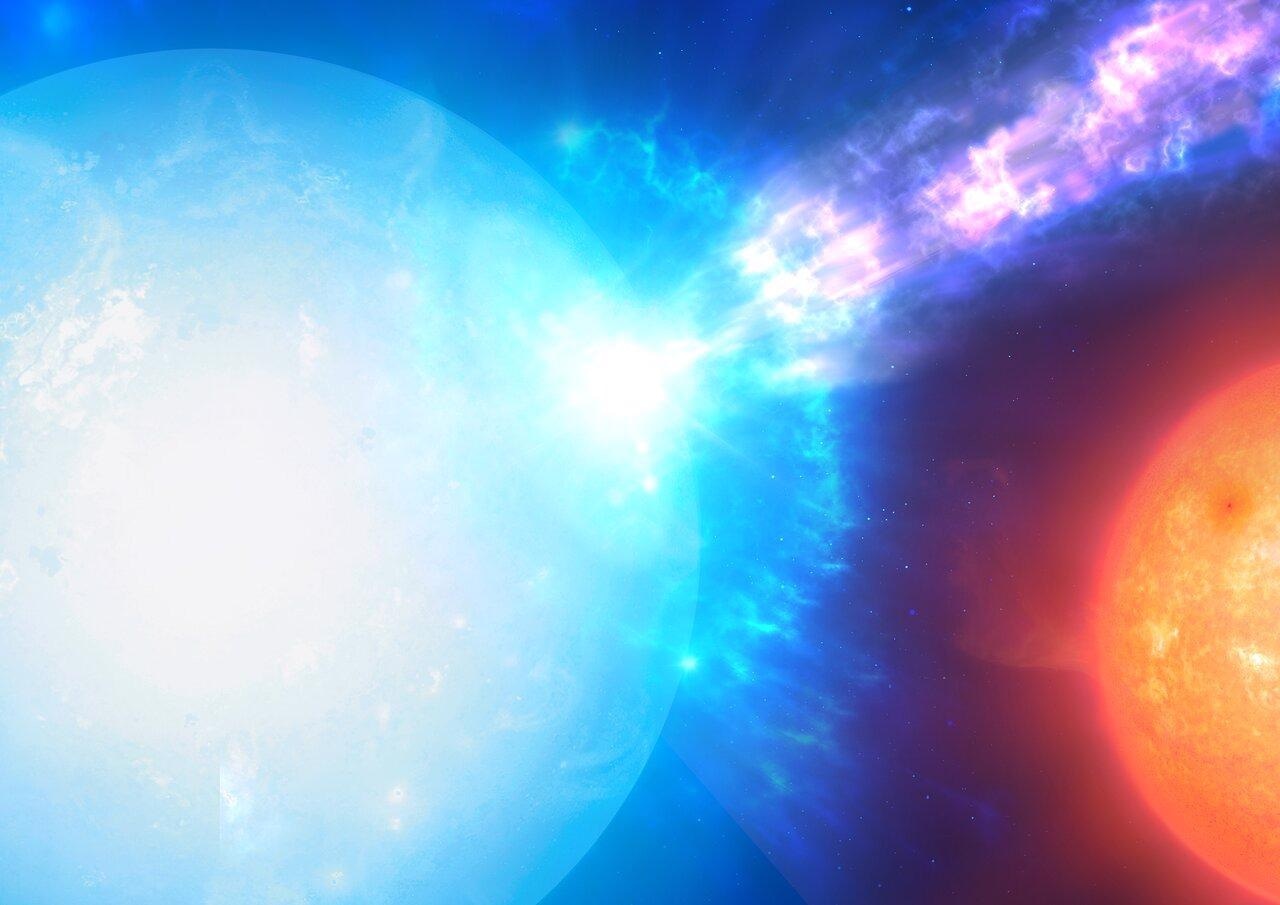These stellar outbursts on the surface of white dwarfs can burn an amount of stellar material that equates to around 3.5 billion Great Pyramids of Giza in only a few hours.

Artist's impression of a micronova occurring. Image Credit: ESO/Kornmesser, L. Calçada
Astronomers have discovered and identified a new type of stellar explosion for the first time, which they have termed a “micronova.”
The discovery could profoundly impact our understanding of how thermonuclear explosions occur in stars, suggesting a new way in which such outbursts could proceed.
While not as powerful as other nova-events like the supernovas that occur at the end of many stars’ lives and signal the creation of a black hole or a neutron star, the micronova — which happens at the surface of a white dwarf — is no slouch in the power department.
In fact, these newly revealed cosmic explosions can, in just a short few hours, burn through stellar material equivalent to the mass of 3.5 billion Great Pyramids of Giza. That means just one micronova outburst can consume as much as 20,000,000 trillion kg of material.
The team, including Durham University astronomer Simone Scaringi and Radboud University astronomer Paul Groot, first encountered three mysterious micro-blasts in data collected by NASA’s Transiting Exoplanet Survey Satellite (TESS).
They confirmed that two of these short but bright optical signals originated from white dwarfs. They then used the European Southern Observatory’s (ESO) Very Large Telescope X-Shooter instrument to follow-up on the third micronova. This helped them confirm all three signals came from white dwarfs.
Scaringi and Groot are the lead authors of a paper detailing the team’s research published today in the journal Nature.
eso2207b (2).mp4
Video Credit: ESO
White Dwarfs And Micronovas
Like other novae, which astronomers have been aware of for some time, micronovae occur at the surface of white dwarfs, the stellar remnants that are left over when stars like the sun run out of hydrogen to fuse to helium within their cores.
This means that the nuclear processes that provide outward pressure cease and the star can no longer support itself against gravitational collapse. As the core collapses inwards, the outer layers of the now-dead star are shed leaving behind an exposed, smoldering stellar core with a mass equivalent to that of the sun squashed into a radius around the size of the Earth. These remnants are white dwarfs.
More from AZoQuantum: Understanding the Magnetism of White Dwarfs
For stars with masses around that of the sun and lacking a companion star, this is the end of the story - gradually cooling as a white dwarf. But for stars in a binary system, the white dwarf stage can be more exciting.
In some cases, when two stars are close enough together, a white dwarf can steal material from its companion star. As this material — mostly hydrogen — falls onto the hot surface of the white dwarf, it triggers bursts of explosive fusion, creating helium. These thermonuclear events occur across the entire surface of the stellar remnant and cause it to shine brightly for weeks at a time.
However, if this process happens on a white dwarf with a powerful magnetic field, the infalling material is funneled towards the star’s magnetic poles. This contains the hydrogen fuel at the base of these poles and localizes the fusion at the white dwarf’s magnetic poles.

Artist impression of a two-star system where a micronova could occur. Image Credit: ESO/Mark Garlick
This results in micronovas similar in scale to other novae, but lasting just hours. It is the speed of these events that the discovers believe has led to difficulty “catching them in action.”
This means that micronovas may actually be abundant in the universe, something that could change our understanding of stellar explosions.
The team of astronomers will now attempt to observe more of these elusive explosions, something that will require large-scale surveys and the ability to perform quick follow-up measurements.
The team behind this discovery believe this could be a task which would suit telescopes like the VLT or the ESO’s 3.58-metre New Technology Telescope (NTT) and their associated instruments. This could reveal in further detail the nature of these macronova.
Source
Scaringi. S., Groot. P. J., Knigge. C., et al, [2022], ‘Localised thermonuclear bursts from accreting magnetic white dwarf,’ Nature, [https://www.eso.org/public/archives/releases/sciencepapers/eso2207/eso2207a.pdf]
https://www.nature.com/articles/s41586-022-04495-6
Disclaimer: The views expressed here are those of the author expressed in their private capacity and do not necessarily represent the views of AZoM.com Limited T/A AZoNetwork the owner and operator of this website. This disclaimer forms part of the Terms and conditions of use of this website.